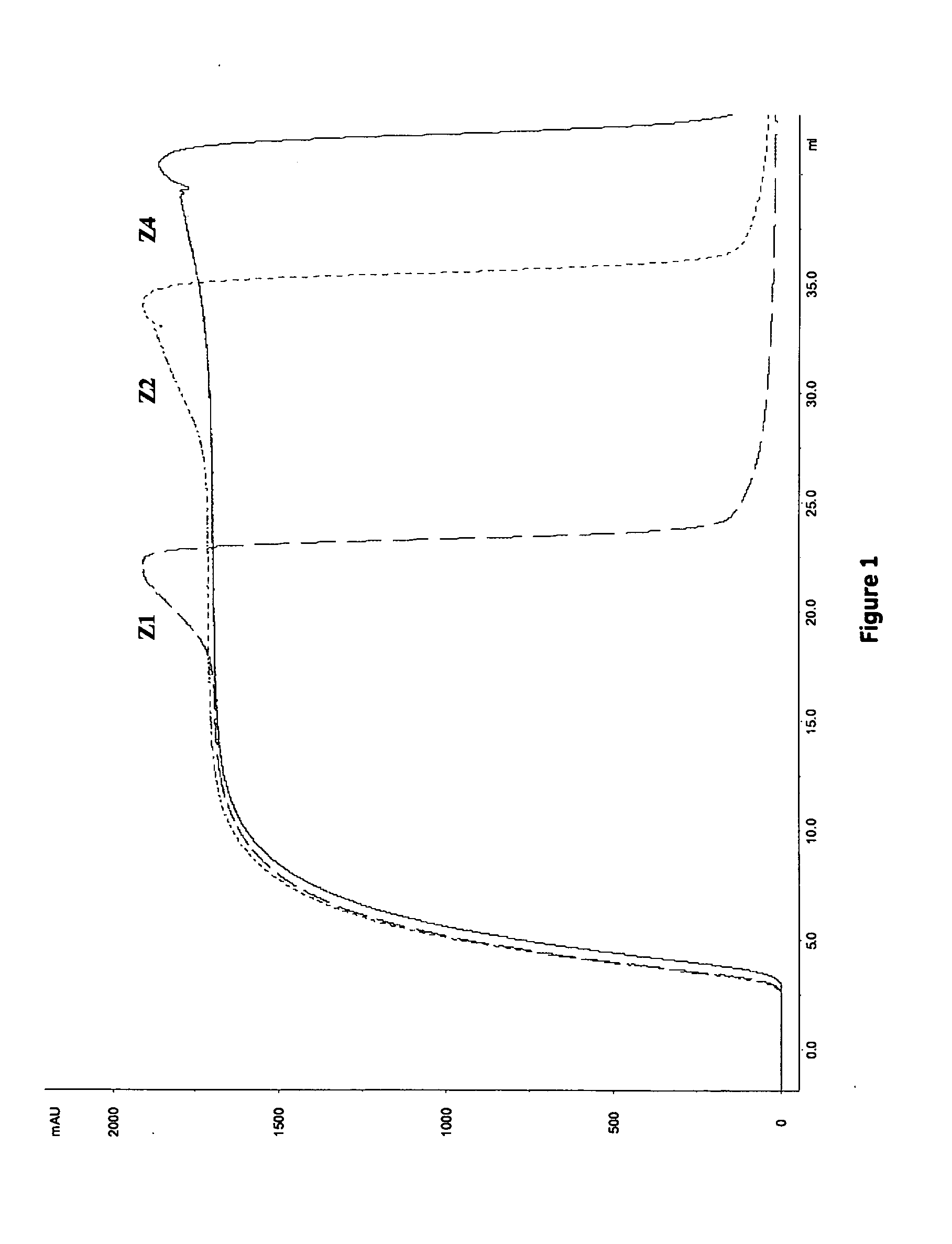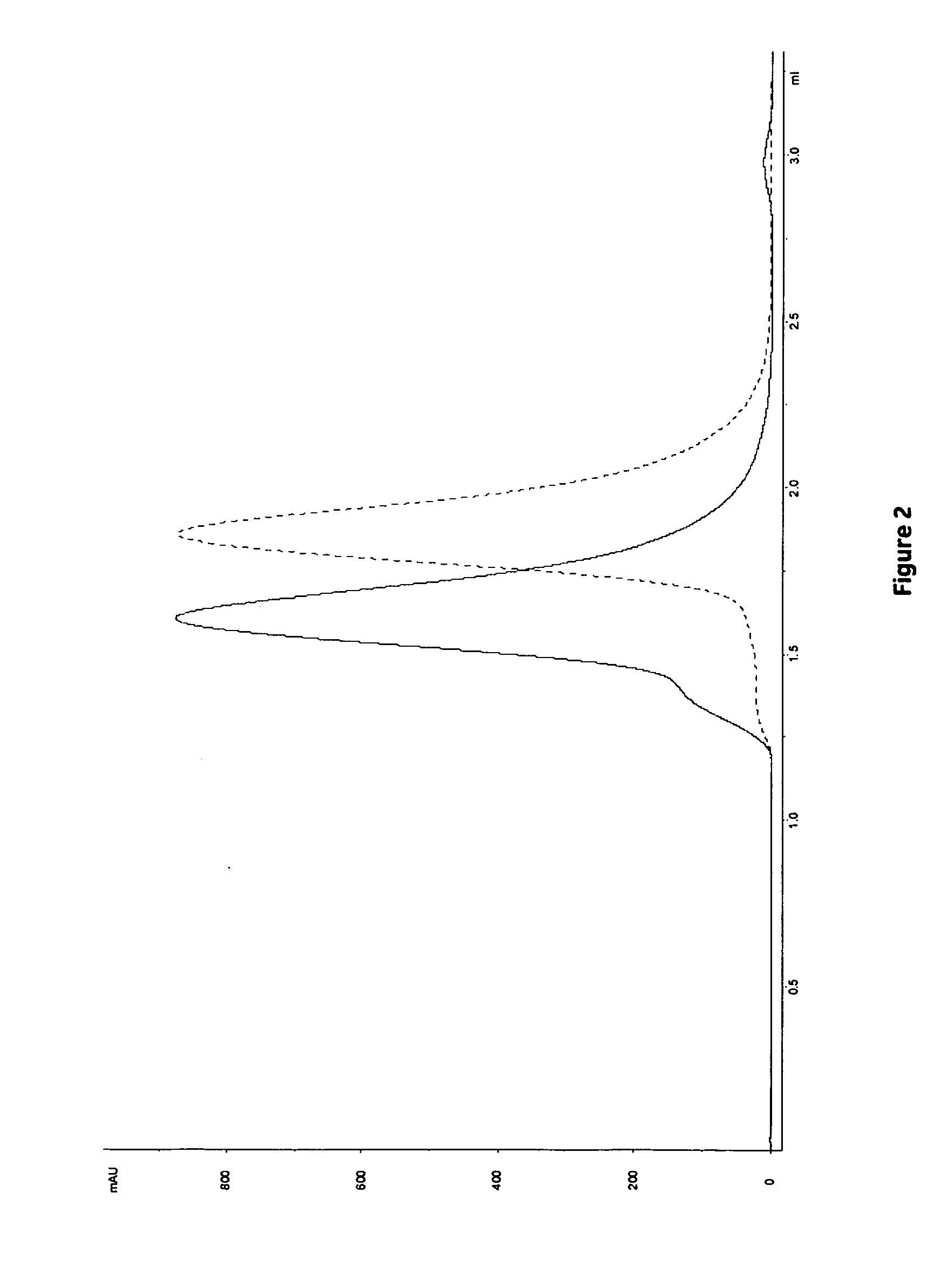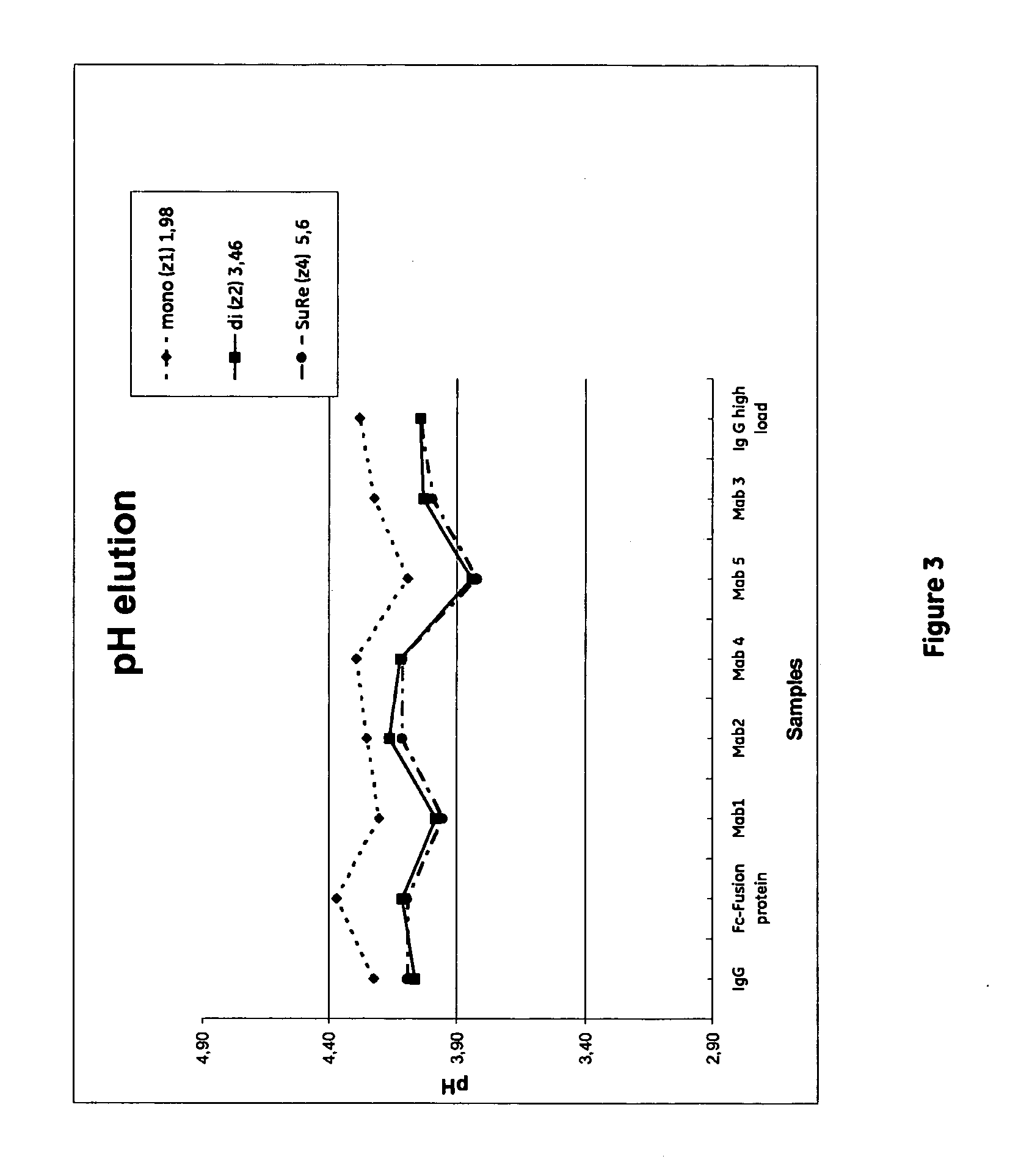Affinity chromatography matrix
- Summary
- Abstract
- Description
- Claims
- Application Information
AI Technical Summary
Benefits of technology
Problems solved by technology
Method used
Image
Examples
example 1
[0064]The aim of this study was to compare the performance of media prototypes based on agarose immobilized with monomers, dimers of tetramers of alkaline stabilized protein A, i.e. the SuRe ligand domain (below named z1, z2, and z4 respectively) by:[0065]Determination of dynamic binding capacity for two different Monoclonal Antibodies expressed in CHO cell culture.[0066]Comparison of elution pH obtained with the various ligands[0067]Measuring clearance of host cell proteins at a sample load of 70% of dynamic binding capacity[0068]at 10% breakthrough.
1. Experimental
1.1. Media Prototypes
[0069]
MabSelect SuRe: Lot 312257(ligand density 5.6 mg / ml)HFA35 Z1: U1975095(ligand density 1.64 mg / ml)HFA35 Z2: U1975098(ligand density 3.46 mg / ml)
1.2. Chemicals and Samples
[0070]PBS buffer, SIGMA, P4417-100Tab
NaOH, Merck, 1.06649.1000
[0071]Tri-sodium citrate dehydrate, Merck, 1.06448.1000
MAb 1, host cell clarified feed (HCCF), 1.1 mg MAb / ml
MAb 2, host cell clarified feed, 1.8 mg MAb / ml
1.3. Systems
[0...
example 2
[0097]The aim of this study was to compare the performance of media prototypes based on agarose based media, coupled with different version of alkaline stabilized protein A, i.e. monomer, dimer and tetramer of the Z domain (below named Z1, Z2, Z4) by[0098]Determination of dynamic binding capacity for “MAb 3”[0099]Measuring clearance of host cell proteins at a sample load of 70% of dynamic binding capacity at 10% breakthrough.
1. Experimental
1.1 Chromatography Media and Filters
[0100]
HFA35 Z4: MabSelect SuRe batch 10007589(ligand density 5.9 mg / ml)HFA35 Z1: U1975095(ligand density 1.64 mg / ml)HFA35 Z2: U1975098(ligand density 3.46 mg / ml)
Superdex 200 5 / 150 GL, GE Healthcare, 28-9065-63
1.2. Chemicals
[0101]PBS buffer, SIGMA, P4417-100Tab
NaCl, MERCK, 1.06404.1000
NaOH, MERCK, 1.06649.1000
[0102]Citric acid, MERCK, 1.00244.0500
Aceton, MERCK, 1.00014.2511
[0103]Raw dextran, GE Healthcare (no lot number)
Preservation solution for dilution of samples for ELISA:
see example 1
3. Results and Discussion
3.1 Frontal Analysis
[0113]The dynamic binding capacity (DBC) at various residence times (1, 2.4 and 6 minutes) was calculated at 10% breakthrough. Results are shown in Table 4 and FIG. 1. The highest DBC was obtained for Z4 (i.e. MabSelect SuRe) followed by Z2. The lowest DBC was obtained for Z1. However, as shown in Table 5, the highest relative capacity (i.e mg MAb / ml ligand) was obtained with ligands with fewer Z-units, Z1>Z2>Z4. This result is in accordance with previously results obtained in Example 1.
TABLE 4Summary of results from frontal analysis.DBC 10% (mg / ml)LigandLigand density (mg / ml)1.643.465.9Residence timeZ1Z2Z411723212.42132356233843
TABLE 5Results from frontal analysis expressed as relative capacity.Residence time (min)Ligand density(mg / mg ligand)112.46mg / ml resinZ11013141.64Z279113.46Z44675.91DBC at 1 minute residence time was difficult to determine due to leakage of MAb during sample application.
3.2. HCP Clearance, Yield and Purity
[0114]Sam...
PUM
| Property | Measurement | Unit |
|---|---|---|
| Fraction | aaaaa | aaaaa |
| Fraction | aaaaa | aaaaa |
| Fraction | aaaaa | aaaaa |
Abstract
Description
Claims
Application Information
 Login to View More
Login to View More - R&D
- Intellectual Property
- Life Sciences
- Materials
- Tech Scout
- Unparalleled Data Quality
- Higher Quality Content
- 60% Fewer Hallucinations
Browse by: Latest US Patents, China's latest patents, Technical Efficacy Thesaurus, Application Domain, Technology Topic, Popular Technical Reports.
© 2025 PatSnap. All rights reserved.Legal|Privacy policy|Modern Slavery Act Transparency Statement|Sitemap|About US| Contact US: help@patsnap.com



